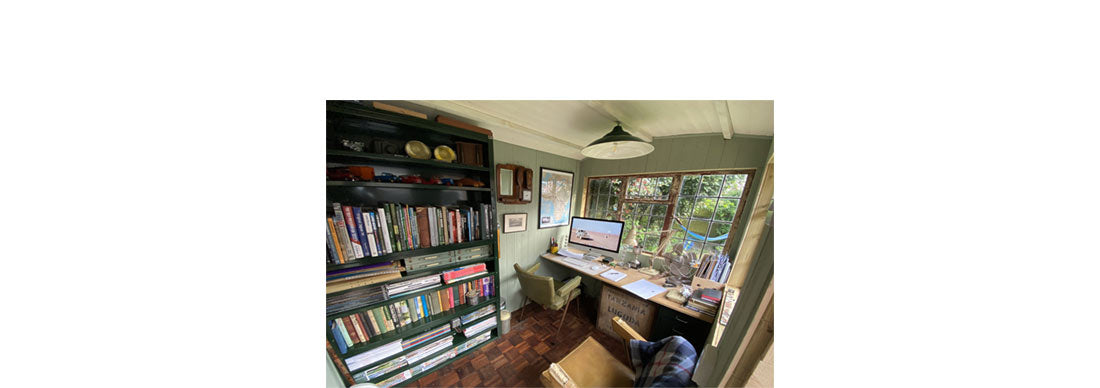The 1980s Railton And My Inadvertent Involvement
When I was researching for my massive tome, Jaguar E-type – The Definitive History in about 1987, I visited the designer William Towns (remembered for the Aston Martin DBS and the 1988 ‘wedge’ Lagonda) to talk with him about the Guyson E12 which he created in 1974.
After dealing with that, we had a glass of wine and chatted generally about styling and Jaguar, and I said that I felt the XJS was not the most beautiful car the company had ever designed. I was crazy about, and still am, the Pininfarina XJS Spyder which was shown at the '79 Motor Show and which, in my opinion, was the direction Jaguar should have taken and, in a sense, did many years later with the XJ41/DB7/XK8 models. With its elliptical mouth and soft, flowing lines, it was pure Sayer and, in fact, quite similar to a shape he designed in the ‘60s for an E-type replacement and for which I had the drawings.

I hankered after building my own Pininfarina XJS Spyder on an XJS basis, possibly even on a commercial basis, and mentioned this to William. To this, he said, ‘Come downstairs. I’ve something to show you.’
We went down to the subterranean styling studio at his home near Wellesbourne in Warwickshire and he showed me a clay model he was working on for an XJS body. This was obviously something of a coincidence, but it was clearly very different from what I had in mind. It was very much influenced by the Mercedes-Benz sports styling of the day and was angular with flat surfaces, and was a closed coupé. I explained my concept, emphasising that my ideal was for a softer, more curvaceous shape that was obviously a Jaguar. I clearly remember his words to this day. ‘Right, let’s do it.’
Next day I had a phone call. ‘Can you come over and have a look at what I have done?’
I went over and Towns had modeled, in about 1/8th scale I guess, the shape that would later see the light of day as the Railton. TWR were racing the XJR-9 at that time and it had rear wheel spats, at least for the higher speed circuits. Towns had taken this, plus the fact that the XK 120 had had spats, as his styling cue to incorporate them in his model. Actually, I was not over-keen on the shape but did not feel able to tell him so, especially as he was a well-known, successful and distinguished designer and I was a mere scribbler. This was only my second or third book and I was completely unknown.

Buoyed by his enthusiasm, and still hoping I could influence things more ‘my’ way, I had a meeting with Jim Randle, the Jaguar Engineering Director at that time, whom I had got to know while writing my XJ40 book. Jaguar were working on producing an XJS Convertible, in place of the halfway-house Cabriolet and finding it quite a challenge to add torsional rigidity without adding excessive weight. He said he would give us two XJS Convertible platforms – i.e. without outer body skins – to use as a basis for our project but... but on the understanding the project was a styling exercise for our own amusement and, who knows, maybe Jaguar publicity, but not as a commercial undertaking. However, we had commercial ambitions and had to turn it down. This could be one of those things in life one regrets!

Meanwhile, I quickly realised William’s estimated costs for the project were optimistic and my role was to finance the scheme in return for William’s styling input. Add to that my serious doubts about the shape, and the plot began to fall apart. I took a close friend to look at the model and he agreed with my views. To cut a long story short, Towns was not impressed with me and wrote me a very unpleasant letter and that, sadly, was that.
Except that it was not. Some little while later, the Railton appeared at the 1989 Motorfair (a major London motor show) and I understand two were made – a burgundy-coloured example known as the F28 Fairmile and a blue one christened the F29 Claremont. Clearly it was not a success and pretty much disappeared without trace.
As for the XJS Spyder, I later had a project with a clever Spanish guy based in South Wales, by the name of Emilia Garcia whose company was called EG Autokraft. He had converted a number of Ferrari Daytonas into Spyders and built superb Daytona Spyder replicas, generally with a Jaguar V12 engine.


He had almost finished the body for my project and then progress ceased. Sadly, I had to sue him and he was repaying me monthly before he suddenly moved to the States and the payments stopped!
Books by Philip Porter
Other articles by Philip





Leave a comment
This site is protected by hCaptcha and the hCaptcha Privacy Policy and Terms of Service apply.